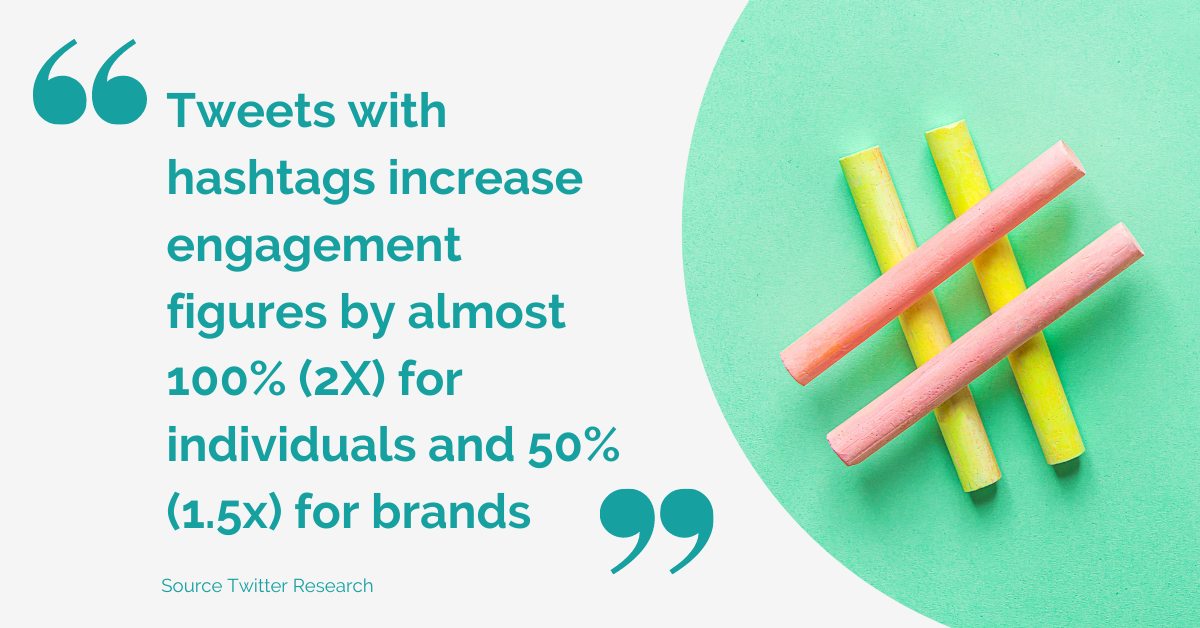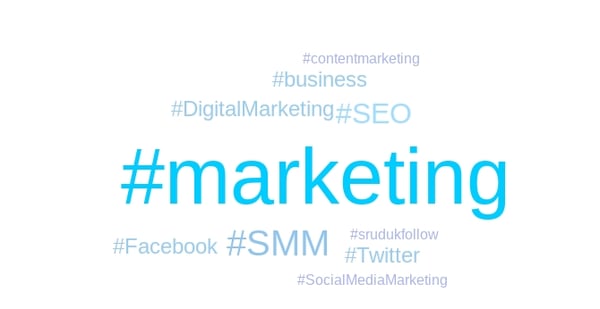I have an embarrassing confession to make.
I, Justyna B. bought Twitter followers in the past. 🙈
Yes, I know, how “…” (fill in the blanks) but for the love of cod, don’t stop reading here!
Let me explain… 😅
Just over 10 years ago, shortly after achieving my shiny marketing qualifications, I started taking my first, shaky steps in digital marketing. I joined a company that was brave enough to embrace both the digital world and my complete lack of practical knowledge about it.
One of my initial goals was to create social media channels for my employer and build a following for them.
Surprisingly, of all of the media, Twitter's following turned out to be remarkably easy.
A local agency claimed that for a reasonable fee they could quickly raise the number of our followers to 10,000. They explained they had a very successful system of approaching people and achieving a following.
So, we decided to buy it! (I’m using plural here, not only because it makes me feel less silly but also because there were more people involved in this decision).
Embarrassingly, at that time no one really questioned the details of the approach. Social media wasn’t used as a place where conversations took place. Many companies used it simply as an additional space where you could create a company page and utilise it to blast out advertising of your offering.
And the number of your followers was simply just that - a number.
A (fake!) social proof.
A counter showing that a certain number of people liked you.
You might be wondering - did the agency deliver what they promised? Of course! Very quickly!
I didn’t know the details of how they did it but I think I know now how. I can see the same behaviour amongst many LinkedIn users – more and more total strangers from a completely unrelated industry/profession & country start following me hoping that, either curiosity or reciprocity will lead me to do the same for them.
I don’t know this for sure but that is the only way I can explain why people with very little LinkedIn connections/activity and no other digital presence have thousands of profile followers.
But back to Twitter - did those followers engage with my perfectly polished Twitter accounts?
Not at all.
Did they bring any significant results to the business?
Nil!
So what works on this platform?
‘Cats and dogs’- I hear you say.
Yes, but not so much in B2B 😊
What works is building an audience of loyal and organic followers who will engage with your posts, regardless of whether you are using Twitter through your own, individual account or running your company’s page.
Want to know more? Grab a popcorn! Below I explain this process in detail.
Optimise Your Profile
If you want more followers, the first place to start should be about telling people something about yourself or your company. You can do that using your Twitter bio where you can explain why people should connect with you.
Here are some tips for making your Twitter profile even more enticing:
- Let your personality shine through. Even though it’s now much more common to inject some personality into your LinkedIn posts, Twitter is a place where people go to see more of the “real you”. So, if you are okay with this, inject a little humour, and share your personal passions or company values.
- Include relevant keywords. If you want to rank higher on search results your bio should include keywords relevant to your role, product/service and even industry or specialisms.
- Use hashtags sparingly. Hashtags can help you get found but they can also be seen as spammy. In fact, a recent study by Mention, found that the more hashtags a bio has, the fewer followers they have.
- Include a clear, smiley profile picture. Remember to keep it consistent with other social media channels. For more tips on how to do so, see our blog, How to ensure your LinkedIn profile picture stands out for the right reasons. For the company page, a logo would be sufficient.
- Use a relevant banner image. Photos can quickly communicate what you offer and reel people in to read your bio.
Increase The Amount You Post With Scheduling Tools
Twitter is fast-paced.
If you don’t want to drown in the Twitter feed sea, then it's important to post regularly.
Co-Schedule rounded up many different studies on frequency "best practice". Many suggest a minimum of 5 tweets a day but no maximum, while others suggest 3 to 5 tweets a day is optimum.
The best way to hit these amounts is to use a social scheduling tool such as HootSuite, Buffer or PostBeyond. That way, you can set aside ten minutes a day to curate content and find tweets you want to retweet and then schedule your posts throughout the day.
Doing so also means that you can time your posts for when your audience is most likely to engage with them. You can use your analytics tools to see when your audience is online or follow guidelines to start with.
A study by SproutSocial found that the best time to post on Twitter is at anywhere between 9am to 10am, with the best days for engagement being Wednesday and Friday.

Engage With Interactions (don’t just post and run)
As much as scheduling tools save you time, Twitter is, after all, a social network. If someone replies or retweets your tweet, then a quick reply or thank you shows the world you’re not a robot or someone with a me-me-me mentality.
Research shows that 42% of consumers expect a 60-minute response on social media when contacting a brand for customer support (and 32% expect one within 30 minutes!). Clearly, the expectations of someone without an army of customer service social representatives will be a little different(!) but the reality remains: Twitter is fast-paced.
If you wait until the next day or a couple of days later to reply, the conversation may have moved on. And it means that you’re missing an opportunity for that conversation to be seen by more potential followers.
Research And Use Hashtags In Your Tweets
Hashtags are critical for getting found on Twitter and finding relevant conversations to join and people to follow. Users can either search for posts containing a hashtag or use the “Explore” section on the right-hand side, which is based on their location, social connections and interests.
Unsurprisingly, Twitter's research found that tweets with hashtags increase engagement figures by almost 100% (2X) for individuals and 50% (1.5x) for brands.
There are a few tools that you can use to find relevant hashtags, including:
Hashtagify provides a broad overview of the popularity of different search terms currently and over time, and it also provides suggested related hashtags.
For example, if you search for #socialmedia you’ll see:
There are plenty of ways to use hashtags in your tweets to increase your following. Some are more relevant for long-term content, others allow you to inject some personality into your brand and others allow you to piggybank on trending topics in the hope it goes viral:
- Industry terms e.g. #socialmedia, #fintech #inboundmarketing
This is perhaps the most obvious hashtag type to use and you should always use a relevant industry hashtag when posting content that is useful to your follower.
- Events e.g. #B2BMarketingEx #Superbowl
These tweets are more time-sensitive and, if the event has a large following, they can be a great way to gain traction on your posts. Many people piggyback on a seemingly unrelated topic with a creative twist.
- Twitter Chats: #SEMRushChat
Twitter chats take place at a certain time each week and so they’re a very useful way to engage in conversations that are happening right now.
- Places e.g. #MCR
These can be handy if you want to get found for local issues, events or retail.
- Themes: #ThursdayThoughts or #FridayFeeling
Themes can be a useful tool for adding some variety and personality to your social media posting schedule.


Find And Engage With Influencers
Finding an engaging with B2B influencers is more than an ego-seeking exercise if they happen to retweet or follow you (which is likely to fall flat if you’re just starting out anyway).
The results-driven reason to follow them initially is that influencers are a go-to source for industry trends. They, therefore, have ample content to retweet to your followers and they know which hashtags work – meaning your post may get picked up by others. By following them, you can also start to identify their finely-honed content strategy.
To find out who they are, you can use followerwonk - an online tool that allows you to run several free searches per day to find those with high social authority for a keyword or hashtag.
Tip: Don’t just go after the big-time influencers. Micro-influencers are lesser-known people moving upwards in their influence and may be more likely to retweet or follow you back.
Create And Post Relevant Content For Your Audience
Engaging with and retweeting content is an easy way to start building a following on Twitter but you need to provide added value to keep your audience engaged. After all, they may already be following the same hashtags and influencers as you.
The easiest way to provide that added value is by creating and sharing content that is relevant to your audience in a variety of different formats such as:
- Videos
- Blogs
- eBooks
- Exclusive survey results
How do you know what is relevant? Use social listening tools to segment your audience into lists by persona and track what content and format they engage with most. As you start to create and share content your analytics will then provide you with further insights into what works best for your audience.
Cross-Post With LinkedIn
We’re used to seeing people cross-post Instagram posts to their Facebook feeds (i.e. sharing a link directly to their Instagram account as opposed to sharing across all networks). You can do the same with Twitter to LinkedIn, which will result in promoting your Twitter handle to most of your professional network.
I hope you found these steps useful. With the planning techniques explained and the right free tools, you will be able organically grow your Twitter following and wave goodbye to the (still-existing!) promises of 10,000 followers for a "small fee"!
